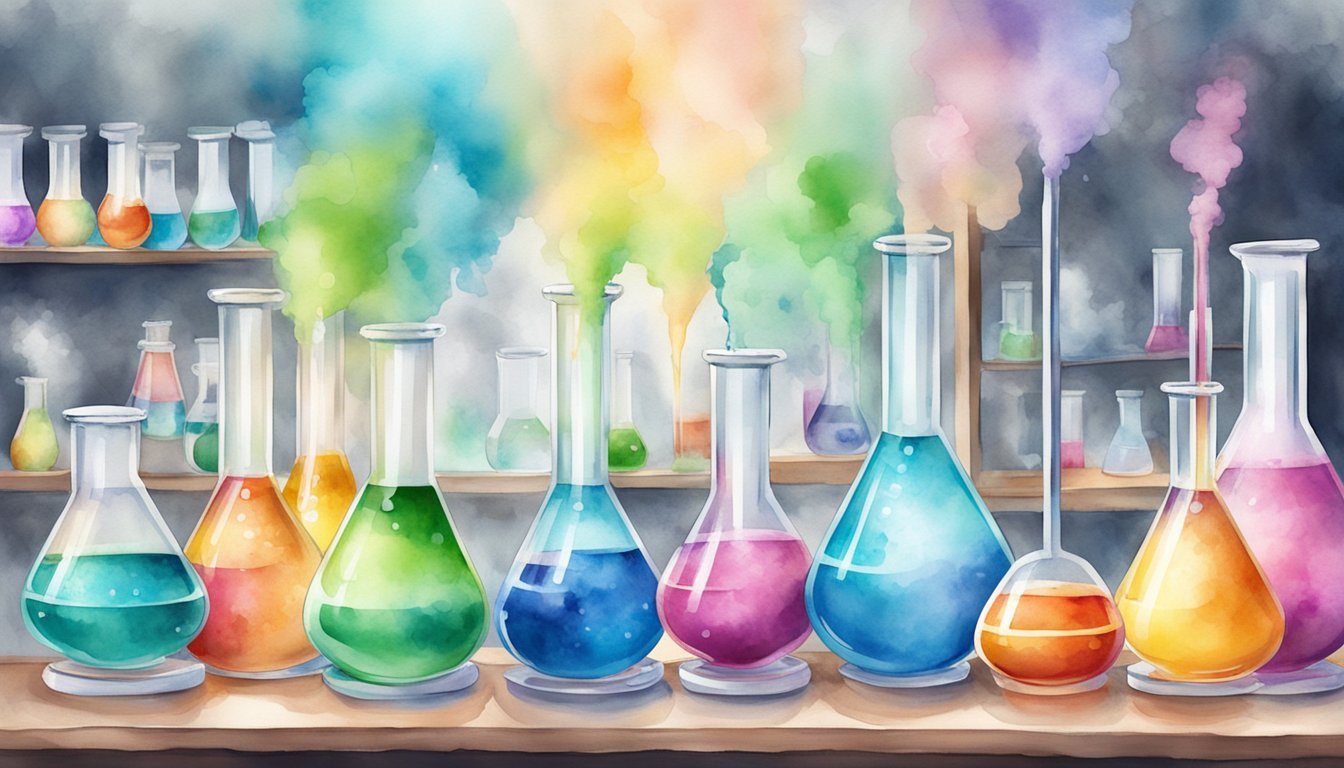Fundamentals of Chemistry
The Atom and Its Structure
Chemistry is the study of matter, its properties, and the changes it undergoes. At the core of chemistry lies the atom, which is the smallest unit of an element that retains its unique properties. Atoms are made up of subatomic particles, including protons, neutrons, and electrons. The protons and neutrons form the nucleus of the atom, while electrons orbit around it.
An important aspect of chemistry is understanding isotopes, which are atoms of the same element with different numbers of neutrons. This gives them distinct properties and behaviors. For instance, some isotopes are radioactive, undergoing decay over time [1].
Periodic Table and Elements
The periodic table is a comprehensive chart that organizes the chemical elements based on their similarities. The elements are arranged in increasing order of atomic number. Each element has unique properties, such as its atomic structure and chemical reactivity.
The periodic table is divided into groups (vertical columns) and periods (horizontal rows). Elements within a group have similar properties. For example, elements in Group 1 (alkali metals) are soft, highly reactive, and have a single electron in their outermost shell [2].
Chemical Bonds and Interactions
Chemical bonding is the foundation of chemistry as it explains the formation of molecules and compounds from individual atoms. There are several types of chemical bonds, including covalent, ionic, and metallic bonds.
- Covalent bonds form when two atoms share one or more pairs of electrons. This bond type is common among non-metal elements. A classic example is the oxygen molecule (O2), where two oxygen atoms share a pair of electrons [3].
- Ionic bonds occur between a metal and a non-metal element when electrons are transferred from one atom to another, creating charged ions that attract each other. Sodium chloride (NaCl), or table salt, is an example of an ionic compound.
- Metallic bonds involve the sharing of free electrons among a lattice of metal atoms. This type of bond gives metals their characteristic properties, such as electrical conductivity and malleability.
In addition to chemical bonds, atoms and molecules can interact through weaker forces called Van der Waals forces. These interactions play a significant role in the properties of liquids and gases, as well as in biological processes [4].
The exploration of the atom, the periodic table, and chemical bonding provides the foundation for understanding the fascinating world of chemistry and its impact on our everyday lives.
Chemical Reactions and Applications

Organic and Inorganic Chemistry
Chemical reactions are processes that lead to the chemical transformation of one set of substances to another. They involve the breaking and formation of chemical bonds between atoms, ions, or molecules. In organic chemistry, the focus is on reactions involving carbon-containing compounds, while inorganic chemistry deals with all the other elements and their compounds.
Many specific reactions in organic chemistry are named after their discoverers, such as Grignard reactions or Diels-Alder reactions. Life as we know it is based on organic compounds and their reactions. Inorganic reactions, on the other hand, play essential roles in processes like the formation of rust, which is an iron oxide formed through oxidation-reduction reactions.
Biochemistry and Life
Biochemistry is the branch of chemistry that deals with living organisms and the chemical processes occurring within them, including the formation and function of biomolecules like proteins, carbohydrates, lipids, and nucleic acids. Chemical reactions in biochemistry are responsible for vital processes like cellular respiration, photosynthesis, and DNA replication.
Some key chemical processes in living organisms:
- Cellular respiration: The process through which cells produce energy by breaking down glucose and other organic molecules in the presence of oxygen.
- Photosynthesis: The process through which plants and other photosynthetic organisms convert sunlight, carbon dioxide, and water into glucose and oxygen.
- DNA replication: The process through which a cell duplicates its genetic material before cell division.
These reactions are driven by enzymes, which act as catalysts to increase the rate of reaction without being consumed.
Industrial Applications and Technology
Chemistry plays a crucial role in various industries and the development of new technologies. In the field of polymer chemistry, the study and manipulation of chemical reactions that form polymers (large molecules made up of repeating structural units) have resulted in diverse materials like plastics, rubber, and fibers.
Medicinal chemistry focuses on the design, synthesis, and discovery of new drugs, while physical chemistry investigates the underlying principles and laws that govern the behavior of matter and energy.
Some applications of chemical reactions in technology include:
- Batteries: Involving oxidation-reduction reactions to generate electrical energy.
- Catalysis: Most industrial chemical processes, such as the production of ammonia, rely on catalysts to increase the rate of reactions.
- Cleaning agents: Different types of chemical reactions are employed to remove dirt, stains, and odors from materials.
Overall, the study of chemical reactions helps us understand the interactions and transformations of substances at the atomic level, paving the way for new discoveries and applications in various fields of human endeavor.

